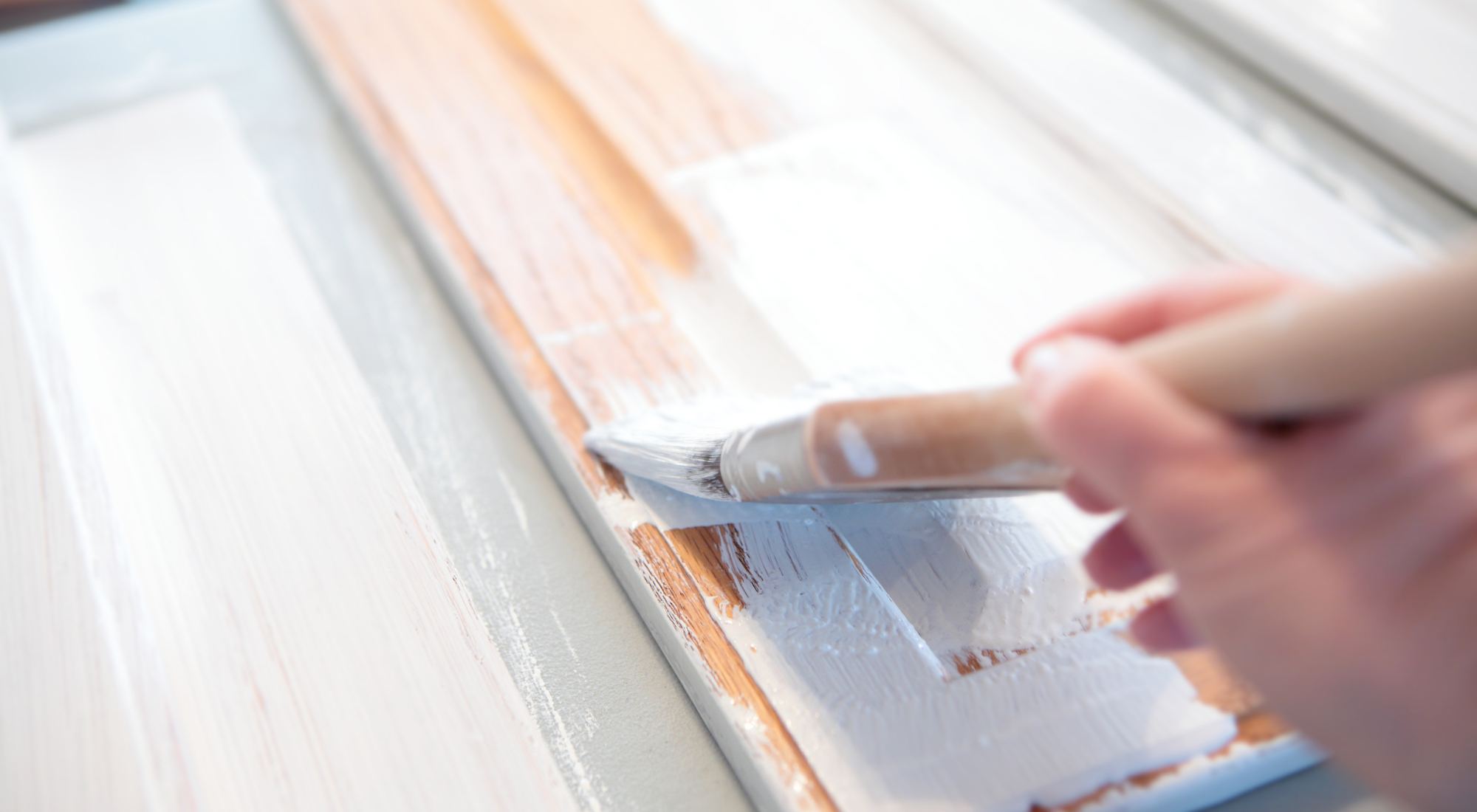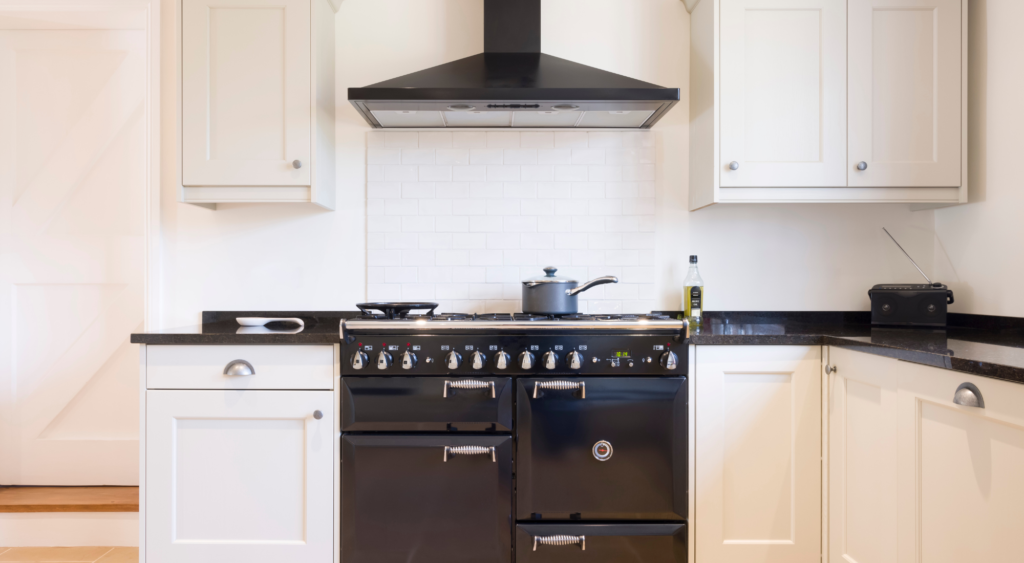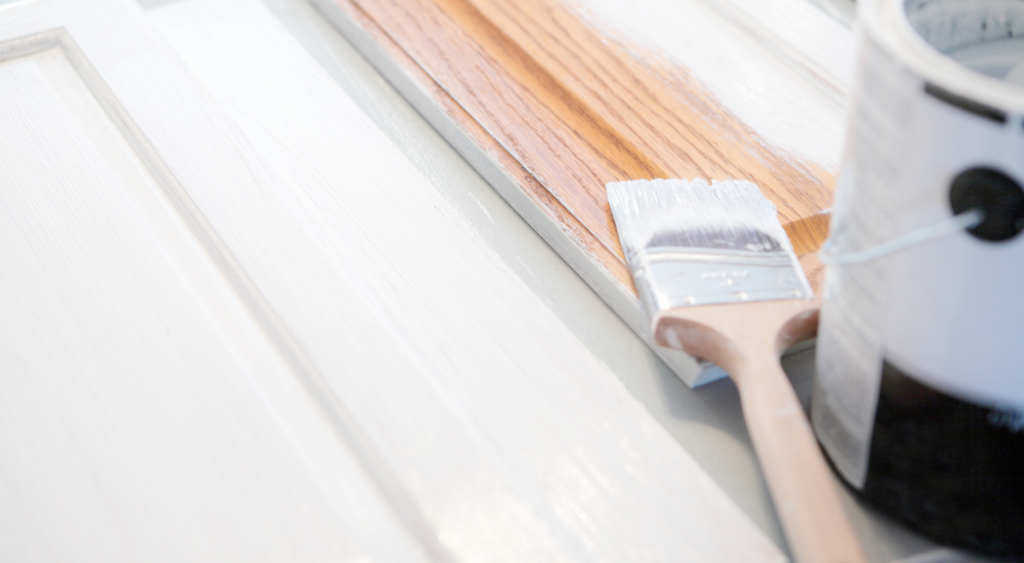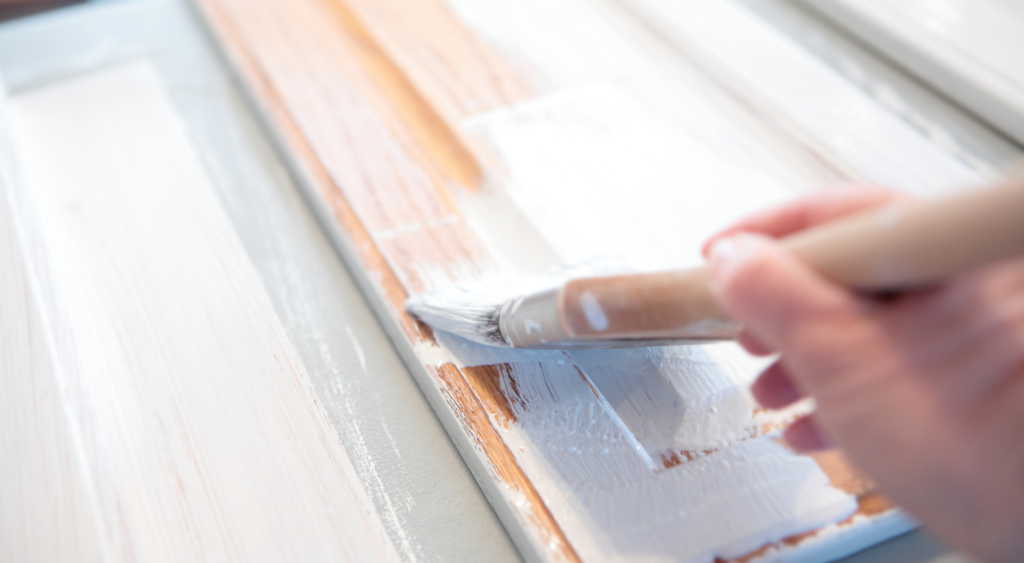Imagine walking into your kitchen on a sunny morning. Your eyes are drawn to your cabinets — it’s apparent they are in dire need of a fresh new coat of paint.
But one question keeps nagging at you: can you paint over painted cabinets?
With a bit of care and effort, revitalizing your kitchen by painting over the painted cabinets is an entirely achievable task. Not only can it transform your kitchen into a space that mirrors your taste, but doing so could also boost the value of your home.
In this article, we will delve into painting already-painted cabinets, from the best materials to use to step-by-step instructions. We’ll also provide hands-on tips and expert advice to ensure you can undertake this project with confidence, ease, and success.
Table of Contents
- Can You Paint Over Painted Cabinets?
- Factors to Consider Before Painting Over Painted Cabinets
- 6 FAQs About Painting Already Painted Cabinets
- How To Paint Already-Painted Cabinets in 4 Easy Steps
- Skip the Hassle and Let Two Brothers Painting Complete Your Cabinet Refresh for You
Can You Paint Over Painted Cabinets?
The answer is a resounding yes! With the proper knowledge and the correct materials, not only is it possible, but it can also yield surprisingly stunning results.
Factors to Consider Before Painting Over Painted Cabinets
Contrary to what many lazy landlords believe, painting over painted cabinets is not as straightforward as applying a fresh coat of paint onto bare wood. It’s a project that involves time, patience, and practical prep work.
But fret not — this task is not beyond your reach. Painting over painted cabinets isn’t some insurmountable challenge. If you’re up to it, it can be an achievable DIY project.
However, if you are one of the many busy people living in the Portland area, you might not have time to prepare and repaint your cabinets.
This is where Two Brothers Painting, LLC, comes in.
At Two Brothers Painting, we pride ourselves on providing exceptional results paired with excellent customer care. If you have cabinets that need to be repainted, we would love to help.
Be sure to consider our services if any of the following factors complicate your DIY plans.
Location of the Cabinets
A crucial aspect that will guide your endeavor is where your cabinets are. The strategy for painting already-painted cabinets will not be the same for those tucked away in your kitchen and those gracing your bathroom.
Kitchen Cabinets
To give your kitchen cabinets a makeover, you may first need to prepare the surface. Begin by thoroughly wiping your cabinets with Trisodium Phosphate (TSP), a heavy-duty cleaning agent that will degloss and prepare your already-painted cabinets for a new coat of paint.
Follow this by lightly sanding your cabinets for mechanical adhesion. This will ensure your new paint coats adhere smoothly to the existing paint surface.
Bathroom Cabinets
While the steps for bathroom cabinets are similar, bear in mind that these cabinets are generally more exposed to moisture and hotter temperatures. Preparation and paint choice (particularly water-based enamel paint) are crucial to prevent paint peeling and flaking.
The Existing Paint or Lacquer
The prep work you must do largely depends on the condition of the existing paint or lacquer on your cabinets. You’ll need to consider both the integrity and the type of paint or lacquer.
Integrity of the Existing Paint or Lacquer
The existing paint may be in various conditions depending on its age, the number of layers, or the type of paint used.
For instance, if buttermilk paint — an antique paint that requires extensive pre-painting preparation due to its distinct properties — was used, you will have to be prepared for some additional prepping and sanding.
True buttermilk paint is a powder that, when mixed with water, becomes paint. Once applied, it takes a long time to cure and fully bond. Once it has set it will absorb into the surface of what it is painted on over time.
The longer it has remained on that surface, the harder it will be to remove. This makes buttermilk paint an excellent choice for furniture and surfaces you want to preserve, so long as you don’t plan on repainting any time soon.
The Type of Existing Paint
When it comes to this factor, you may need to do some detective work to determine what type of paint is already on your cabinets. If you plan on painting over painted cabinets, the existing paint type, whether it’s oil-based or water-based, makes a difference.
Painting Over Oil-Based vs. Water-Based Paint
If your cabinets were previously painted with water-based paint, you’re in luck. The preparatory stage here is relatively more straightforward and involves a spot of cleaning and light sanding before you can freely wield your paintbrush with a couple of coats of your chosen water-based paint.
But if you’re dealing with cabinets that have an oil-based or lacquer coating, you must take an extra step.
So how do you know which one it is? You need to do a little paint testing. Try wiping a small area of your cabinet with rubbing alcohol. If the paint comes off, it’s water-based. If not, you’re probably dealing with oil-based paint. In the case of oil-based paint or lacquer, a primer is necessary to ensure your new paint adheres properly.
For expert guidance, consult with professionals like Two Brothers Painting, who bring unparalleled expertise to architectural finishing and kitchen cabinet refinishing. We know paint so well that we can typically tell you what kind of paint is on your cabinets by sight alone.
6 FAQs About Painting Already Painted Cabinets
#1: Can I Paint Over Painted Cabinets Without Sanding?
If you’re going for the hastily painted college frat house look, then sure. But if you want quality paint, sanding is a must.
The level of sanding needed, however, varies greatly with the type of paint and location. If the cabinets in question were painted with oil-based paint and located in a kitchen with a lot of grease build-up, expect to put in a decent amount of elbow grease while sanding. Conversely, if the cabinets were painted with water-based paint and you live in a cleaner kitchen, you’ll have a much easier time.
Are you a busy professional with little to no effort to give after a long week at work? The professionals at Two Brothers Painting have an ample supply of elbow grease, skill, and vast experience sanding and painting cabinets. We’ll quickly take care of the work for you and leave you with great-looking cabinets and a smile on your face.
#2: Does the Type of Paint You Use Matter?
Like any other painting task, achieving a successful outcome largely depends on the quality and type of paint used.
Generally, any premium paint type, whether latex or enamel-based, is expected to admirably endure daily kitchen rigors and cleaning.
However, several paint companies, such as Benjamin Moore and Behr, have specially designed products for trim and cabinet painting. These paints not only provide a leveled application ideal for cabinetry and trim but can also deliver a sleek, sophisticated finish.
It’s worth noting that gloss or semi-gloss paints are exceptional for resisting scratches and offering a long-lasting finish, making them ideal for heavy-duty areas. They also handle cleaning pretty effectively, ensuring your painted surfaces maintain their allure for a considerable period.
Unsure which paint would be best for your lifestyle and your cabinets? Consult the professionals at Two Brothers Painting.
#3: How Long Does it Take to Paint Over Painted Cabinets?
Painting over painted cabinets is not a quick weekend DIY mission where you can hastily apply standard latex paint. Sometimes, painting your cabinets on your own can take up to two weeks. It necessitates the usage of suitable paint, like urethane trim enamel or latex enamel, as well as an appropriate primer.
If you’re unwilling to put in the necessary preparation time or patiently approach this DIY painting enterprise, it may not be the right project for you to tackle alone.
At Two Brothers Painting, we understand that projects like painting over painted cabinets are not just about a fresh coat of paint but also about maintaining and enhancing the life of your furniture. Our experienced staff is committed to giving each project the detailed attention it needs to make sure the job is done right.
#4: What Materials Do You Need To Paint Already-Painted Cabinets?
The process of painting over painted cabinets calls for the following essentials:
- Painter’s tape: If you don’t trust yourself to paint perfect lines around corners, a roll of painter’s tape will help protect areas that you do not want to be painted.
- Paintbrushes: When painting cabinets, it’s typically recommended to use a quality synthetic brush, specifically one designed for use with your chosen type of paint. If you’re using water-based paint, a synthetic brush made of nylon or polyester can give a smooth finish. For oil-based paints, brushes with natural bristles like hog are excellent.
- Brush size: A brush around 2 to 2.5 inches in width is usually ideal for cabinets as it provides good control without being too small or too large for the workspace.
- Brush type: Angled brushes are also a good choice as they can easily reach corners and edges with precision.
- Small paint rollers: Small rollers are ideal for giving a smooth finish on large surfaces.
- Roller pans: A good roller pan will hold your paint and wet your roller evenly. If you want to minimize cleanup, try disposable rolling pans.
- Trisodium phosphate (TSP): TSP is a heavy-duty cleaning agent that is highly effective in preparing surfaces for painting, especially when those surfaces are notably dirty or greasy. TSP effectively removes grime, soot, and mildew stains with ease, ensuring you have the cleanest possible surface to work on before you start painting.
- Sandpaper: Classic sandpaper is an indispensable tool in any painting job as it serves to smooth out imperfections on the surface and contributes to creating a finer, more polished finish, thereby enhancing the adherence of the new layer of paint.
- Tack cloth: Tack cloth is a specialized type of wiping cloth that is ‘tacky’ and designed to pick up and hold onto dust particles. This makes it perfect for cleaning surfaces after sanding and before painting, ensuring a clean, dust-free surface for the best possible paint finish.
- Painting cones: Painting cones, also commonly referred to as painting pyramids, are designed to lift your project off the ground, facilitating easier painting of edges and preventing the newly-painted surfaces from sticking to the floor or getting dirty, ensuring a pristine paint job from all angles.
- Drop cloths: Drop cloths protect your floor, furniture, and other nearby items from paint drips, spills, and dust, maintaining the cleanliness of your workspace and saving you time on post-project cleanup.
- Specialized cabinet paint: This is specifically formulated to provide a durable and smooth finish on heavily used surfaces like cabinets and furniture. Its hard-wearing qualities make it more resistant to chipping, peeling, and stains, ensuring your cabinets look professionally done and remain stunningly beautiful for a long time.
#5: Do I Need To Remove Paint From Cabinets Before Painting?
Removing paint from cabinets, also known as stripping, isn’t a definite requirement for painting your cabinets.
Removing the old coating is generally only necessary if the old paint has significantly cracked, peeled, flaked, chalked, or blistered or has developed other painting defects like bittiness, saponification, and algae or fungus growth.
#6: Do I Need To Use Primer on Already-Painted Cabinets?
Whether you should use premier on already painted cabinets may depend on the following:
- Previous paint used: If you’re using water-based latex paint on cabinets that were previously painted with oil paint, you’ll need to apply primer for the paint to adhere.
- Finish: Cabinets with a smooth, lacquered finish may require primer for the paint to stick.
- Imperfections: If your cabinets have a few imperfections, the primer will help the paint cover them up smoothly.
Generally, primer always helps create a good base for the first coat of paint.
How To Paint Already-Painted Cabinets in 4 Easy Steps
Follow these four step for steps for a flawless DIY cabinet paint job.
Step #1: Remove All Cabinet Doors and Hinges
Begin by taking off all the cabinet doors as well as the hinges. Make sure to label each door and hinge systematically to avoid confusion when reassembling. Especially for adjustable hinges, it’s vital not to mix them up, or the doors might not shut properly.
Try storing the hinges in their respective cabinets, which makes it easier to reinstall them in their precise, original location.
Step #2: Thoroughly Clean the Cabinets
It’s crucial to make sure your cabinets are clean before you start the painting process. Tackle this task by lightly sanding down the existing glossy paint finish, using no rougher than 220-grit sandpaper. Then wipe everything down with a damp sponge.
For tougher messes, remember that you can use TSP.
Step #3: Sand and Prime the Cabinets
To ensure smooth application and vibrant color, sand the cabinets one more time before priming them. For minor color changes where you’re applying water-based paint over an already water-based finish, you might not need a primer.
However, for a dramatic color transition or while painting over a solvent-based finish, a tinted or oil-based bonding primer will do wonders for your cause.
Step #4: Get to Painting
Start the painting process by laying the cabinet doors flat and away from the frames. Remember, enamel paint tends to stay soft until the next day, so you either paint one side each day or employ some painting aids that allow you to paint both sides on the same day.
An angled paintbrush works wonders when it comes to covering the narrow sections of your cabinets and their front panels. A 4-inch long fabric or foam roller is recommended to paint the ample parts of the panels and frames, ensuring a flawless look throughout your cabinets. Stick to a nap thickness of about ¼ inch for the best result.
Skip the Hassle and Let Two Brothers Painting Complete Your Cabinet Refresh for You
Repainting already-painted cabinets is certainly a project that involves a commendable amount of precision, patience, and commitment. Dealing with layers of old paint, ensuring smooth sanding, skillful priming, and reaching each narrow corner without leaving brush lines can feel overwhelming and daunting.
If your to-do list is growing or the intricacies of this project leave you hesitant, Two Brothers Painting is here, ready to ensure your cabinets receive a superior makeover without the headaches of a DIY approach. Proudly serving the Pacific Northwest, we specialize in transforming homes with expert precision, thoroughness, and a commitment to quality that is visibly present in every square inch of our work.
Trust Two Brothers Painting to take care of the complexities of this project as we refresh your cabinets with excellence.





